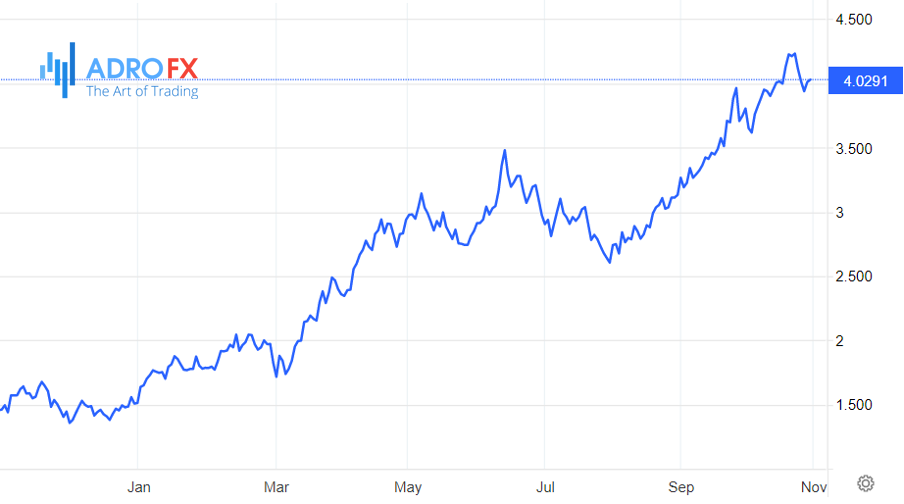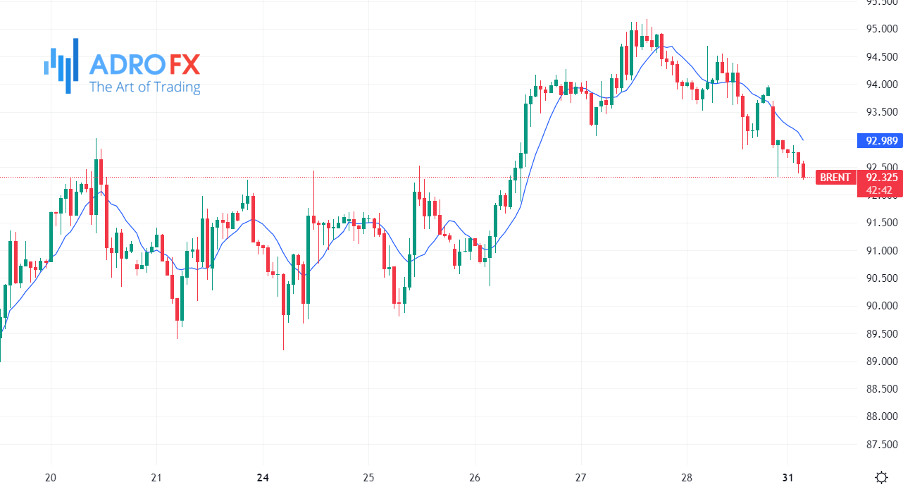Further Monetary Policy Tightening to Hold No Good to the Stock Market | Daily Market Analysis

Key events:
New Zealand - Labor Day
UK - Composite PMI
UK - Manufacturing PMI
UK - Services PMI
Financial conditions have tightened over the past few weeks, but have not reached restrictive levels, which means the Fed has a lot of work to do. A good indicator of current financial conditions is the Federal Reserve Bank of Chicago's Financial Conditions Index. An increase in its value is usually accompanied by a decline in stocks and vice versa. The recent tightening of financial conditions was one of the main reasons the stock market was in trouble.

What is striking, however, is that the National Financial Condition Index (NFCI) and Adjusted National Financial Condition Index have failed to rise and remain above zero, despite strong increases since the Jackson Hole economic symposium. When the index rises above zero, financial conditions are considered restrictive. When the index is below zero, conditions are considered soft.
● Further tightening of financial conditions is necessary to reduce inflation
Currently, both indices are close to zero but still below it, which means that the monetary tightening produced by the FOMC has not yet reached restrictive territory in practice, and financial conditions must be tightened further in order to achieve the desired effect of lower inflation.
For example, the last time there was a long period of high inflation, namely in the 1980s, the NFCI and the adjusted NFCI were above zero for a while, which means that both will rise above zero this time as well and remain above zero for a while.
● Tightening financial conditions have a negative impact on stocks
The bad news is that tighter financial conditions are usually accompanied by a decline in stock prices. It turns out that the S&P 500 and the broad market have yet to make their lows.

If you look at 2022, the connection between tightening financial conditions and falling stocks becomes clear. The same can be said for a rally in stocks when financial conditions soften. The question is how much more financial conditions should be tightened and how long it will take for the rate of inflation to decline. The answers to these questions will help judge the trajectory of the current bear cycle.
Financial conditions are unlikely to peak until it is clear that the Fed's monetary tightening cycle is over, that is when the central bank stops raising interest rates. At this point, it is not clear when that might happen.
● More Fed rate hikes ahead
The Fed Fed Funds rate futures market continues to revise estimates following the release of the higher-than-expected CPI. Based on current expectations, the rate will peak at 5% by May 2023. If that is the case, the Fed is yet to raise rates significantly, which means additional marked tightening of financial conditions awaits.

Tightening financial conditions will have a big impact on stock performance. The stock market will not come close to the bottom until financial conditions peak. In the meantime, we have to wait for further losses.









